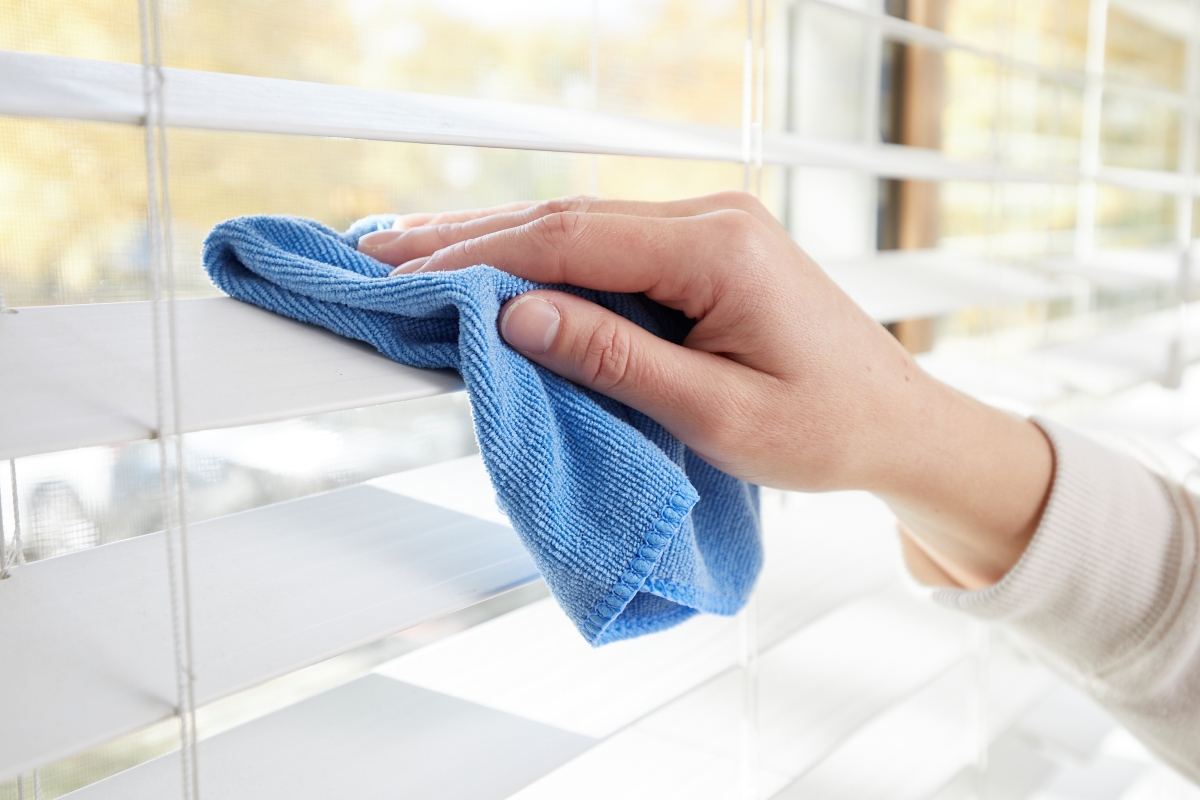We may earn revenue from the products available on this page and participate in affiliate programs. Learn More ›
No matter how clean your home may be, it’s probably still a little dusty. Dust is a nuisance, but it’s also pretty gross: The particles that make up dust come from dirt, pollen, mold spores, dead skin cells, hair, and fabric fibers, as well as airborne pollutants such as wood ash, chemicals, and vehicle exhaust. For individuals who suffer from asthma, allergies, or other breathing problems, learning how to get rid of dust in the air is particularly important because doing so can improve their health and quality of life.
Minimizing the amount of dust in your home makes a huge difference in air quality, and it can help prolong the life of furniture, appliances, and household electronics. Keeping your home as dust-free as possible requires vigilance and consistency. It all starts with a regular weekly cleaning: Vacuuming furniture and drapes regularly, and changing air filters in your HVAC system monthly can go a long way to helping you combat dust. (If you’re wondering how to get rid of dust mites, here’s a pro tip: Dry-cleaning or washing pillows is half the battle.) Ahead, learn some simple suggestions on how to maintain your home so the air is as clean, comfortable, and as dust-free as it can be.
1. Lay Out a Few Doormats
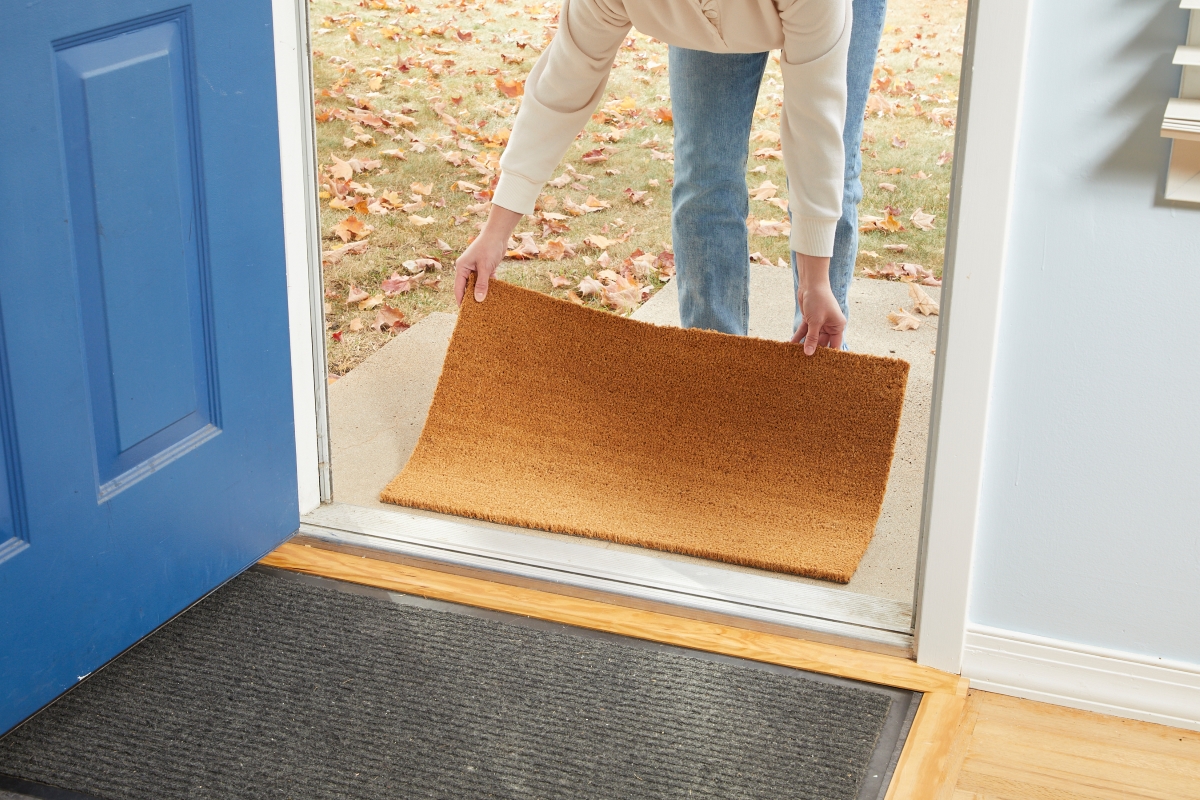
Every time visitors come in from outside, they track dirt into the house, and dirt particles are a major component of dust. Use both indoor and outdoor doormats—especially the kind with a bristle top—to trap dirt and keep it from traveling farther into your home. Wash or vacuum the mats regularly to prevent buildup.
2. Clear the Clutter
If they remain untouched, even the most attractively displayed items on shelves and in curio cabinets will just collect dust. Do some editing if you can, or be vigilant about giving books, bookcases, and objects of beauty a frequent dusting.
3. Be Diligent About Grooming Pets

Dead skin cells and dead hair are a major source of dust, and unfortunately, our furry friends produce a lot of hair. Groom pets regularly to help keep dead skin and hair from accumulating around your home. As a bonus, you and your pets will feel better too. Keeping kitty’s litter box covered will also help corral the dust.
4. Change Bedding Weekly
The fibers from bed linens create dust. But the bigger challenge with bedding is that it captures all the dead skin particles from your body while you sleep. Wash your sheets once a week; wash your blankets, comforters and mattress pad once every month or two to help keep the dust down in your bedroom.
5. Keep Windows Closed
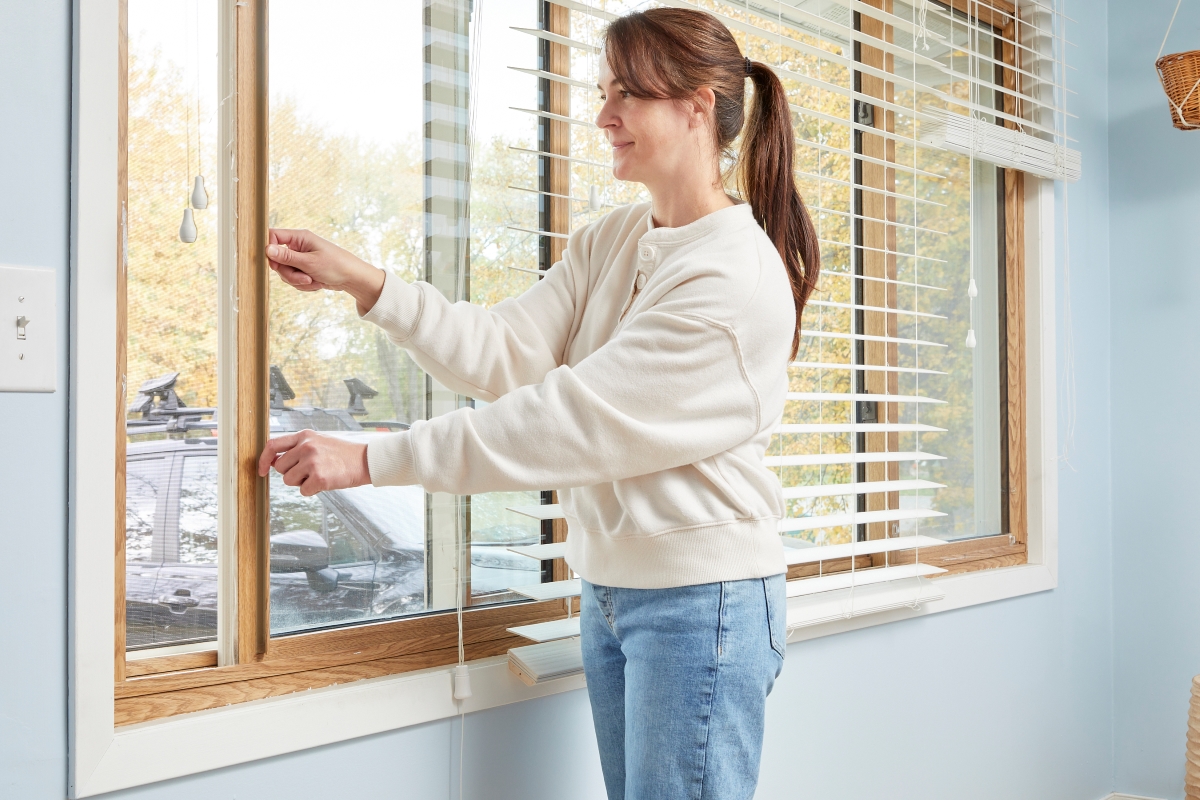
It may seem counterintuitive, but opening the windows to get some fresh air actually increases the amount of dust in your home. Dust enters through doors and windows in the form of pollen, mold spores, and airborne pollutants, all of which create a significant buildup that you can see on windowsills. Keeping the windows closed, especially on windy days, will minimize the problem.
6. Forgo Carpeting
Pulling up your carpeting might seem like a drastic measure, but carpeting holds an awful lot of dust and releases it into the air every time you take a step. If you are thinking of redecorating, consider installing some type of hard-surface flooring: wood, tile, stone, or vinyl are all good alternatives to carpeting and much easier to keep dust-free.
7. Clean Your Pillows
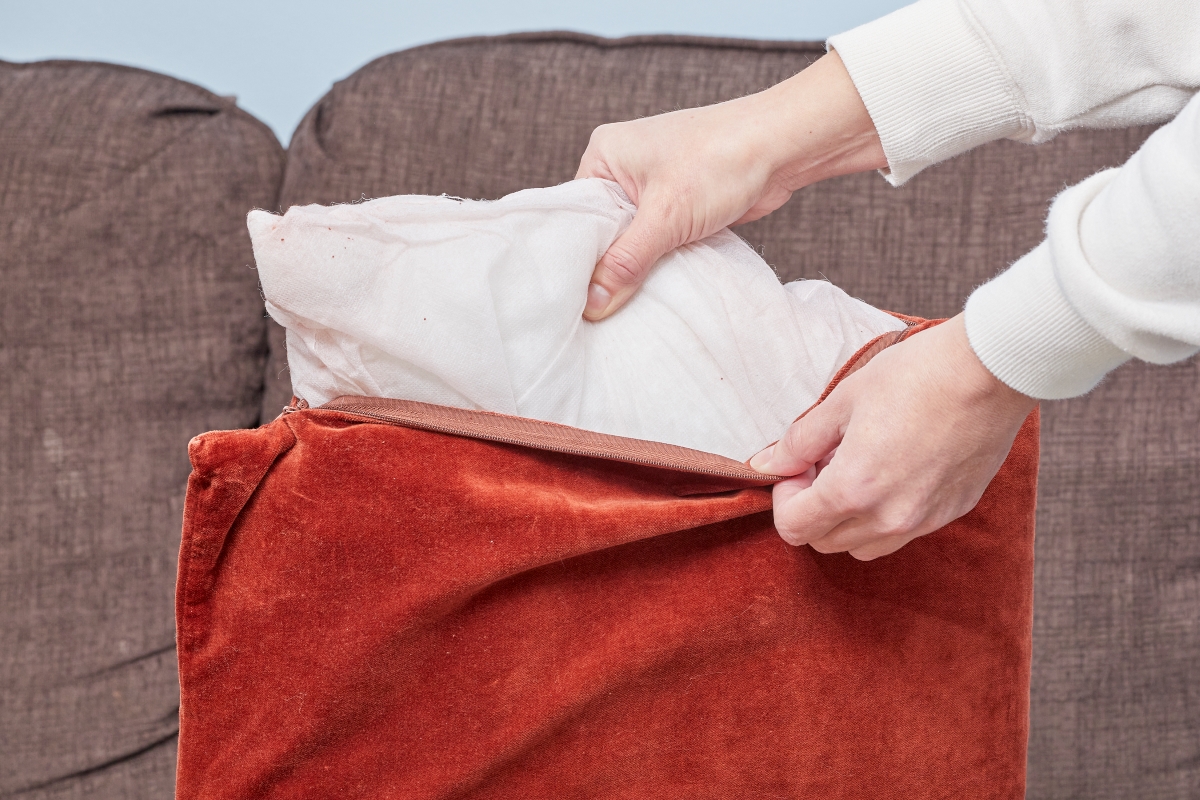
Even if you wash your sheets and pillowcases every week, dust mites can still live inside the pillows. Using a mild detergent, wash them by hand or in the washing machine, then dry and fluff. Alternatively, take them to the dry cleaners. Whichever route you choose for cleaning pillows, you’ll breathe easier at bedtime.
8. Vacuum Properly (and Regularly)
A good vacuum cleaner is the best weapon in a home’s dust-busting arsenal. A thorough vacuuming once a week, or even once a day, will go a long way toward eliminating dust. Many new bagless styles come with built-in HEPA filters, which trap even smaller particles of dirt and help freshen the air.
9. Damp It Down
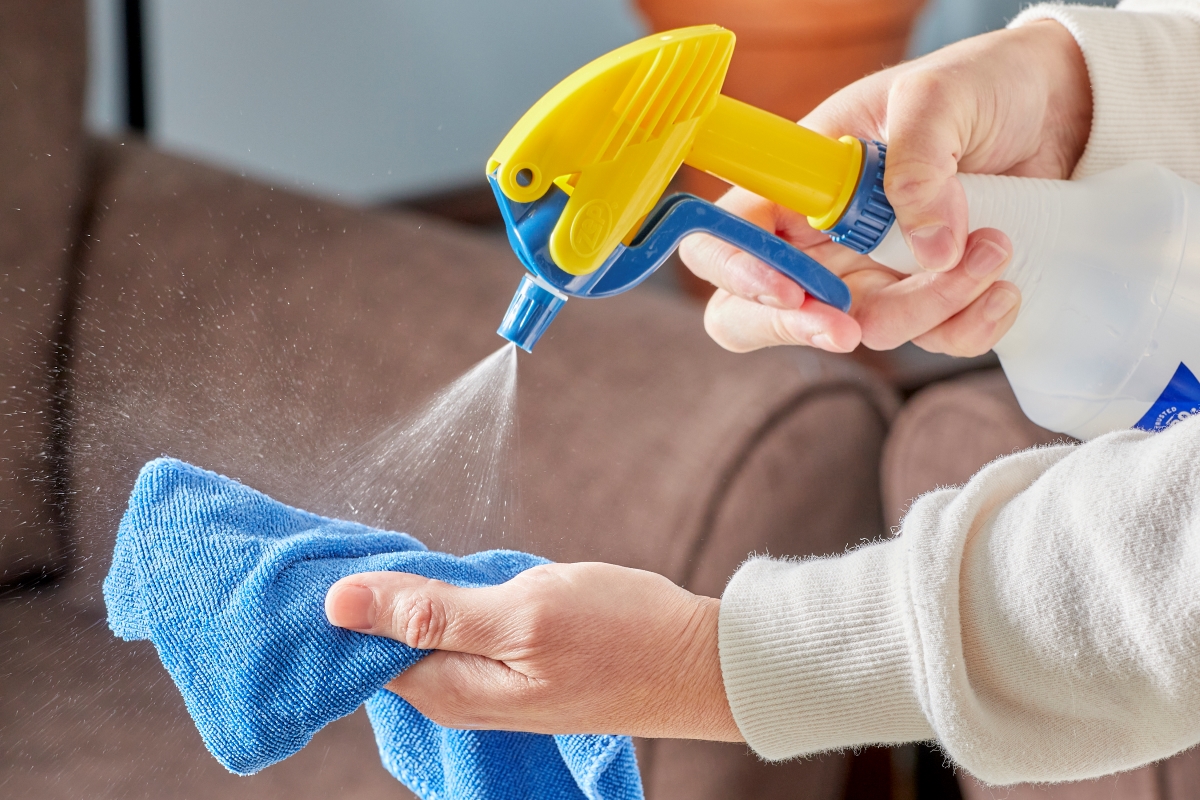
Never underestimate the power of water. A good damp mopping and dusting will go a long way toward eliminating 90 percent of the dust in your home, and plain water is just about as environmentally friendly a cleanser as you can find. A damp rag or mop captures and holds dust, which can then simply be rinsed down the drain.
10. Give Rugs a Good Beating

One of the best ways to get rid of dust and dirt on area rugs is to take them outside and beat them, just like in the old days. Rug beaters, which are usually made of rattan, wire, or plastic, are excellent dust removers and typically better at removing dust than vacuuming is.
11. Install a Humidifier
Static electricity, which builds up inside your home when the rooms are dry, actually attracts dust and makes it cling stubbornly to surfaces. The solution? Install a humidifier, either a whole-house humidifier or a room-size version. Ideally, you should aim for relative humidity levels of 40 to 50 percent throughout your home to help eliminate static and keep dust levels down.
12. Dust Fabrics and Upholstery
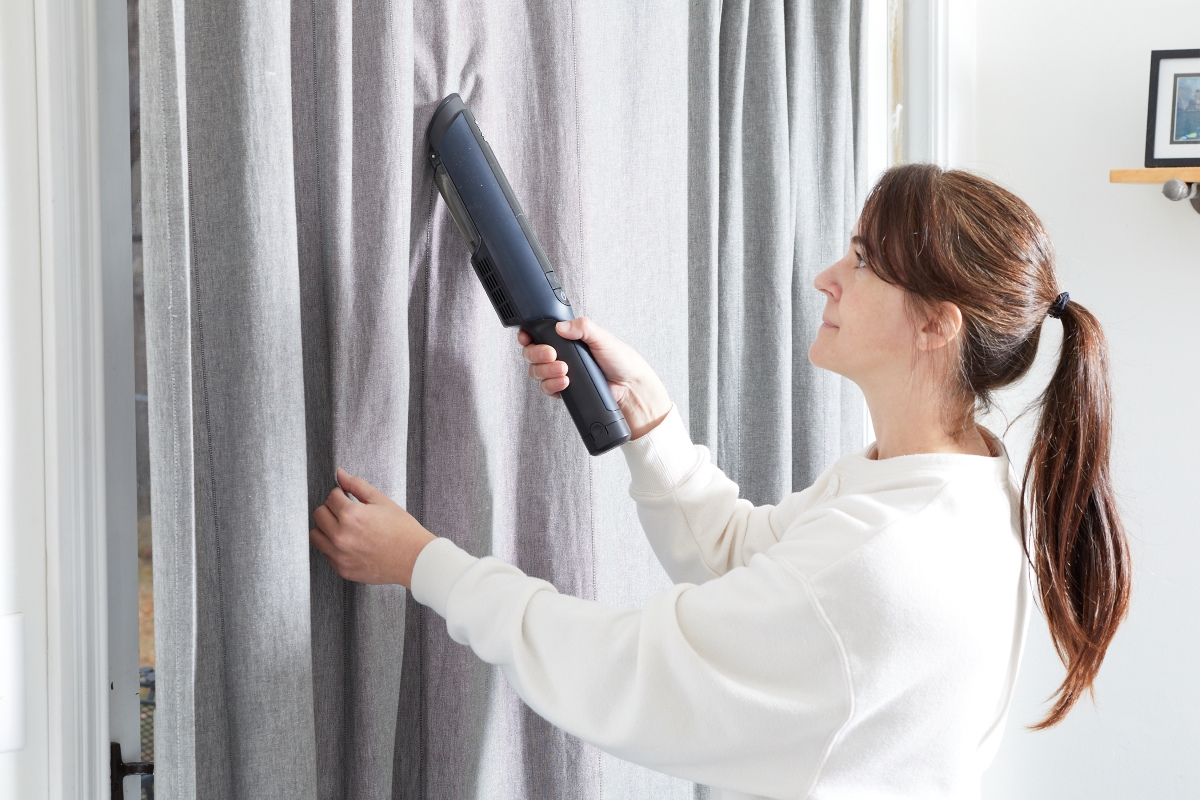
Vacuuming isn’t just for floors. How often do you clean your curtains? Or vacuum your couch? Your lampshade? The soft fibers in these places draw a lot of dust. Whether you opt to use a steam cleaner or a vacuum cleaner, regular upkeep of your textiles is a must for a dust-free home.
13. Clean Your Window Blinds
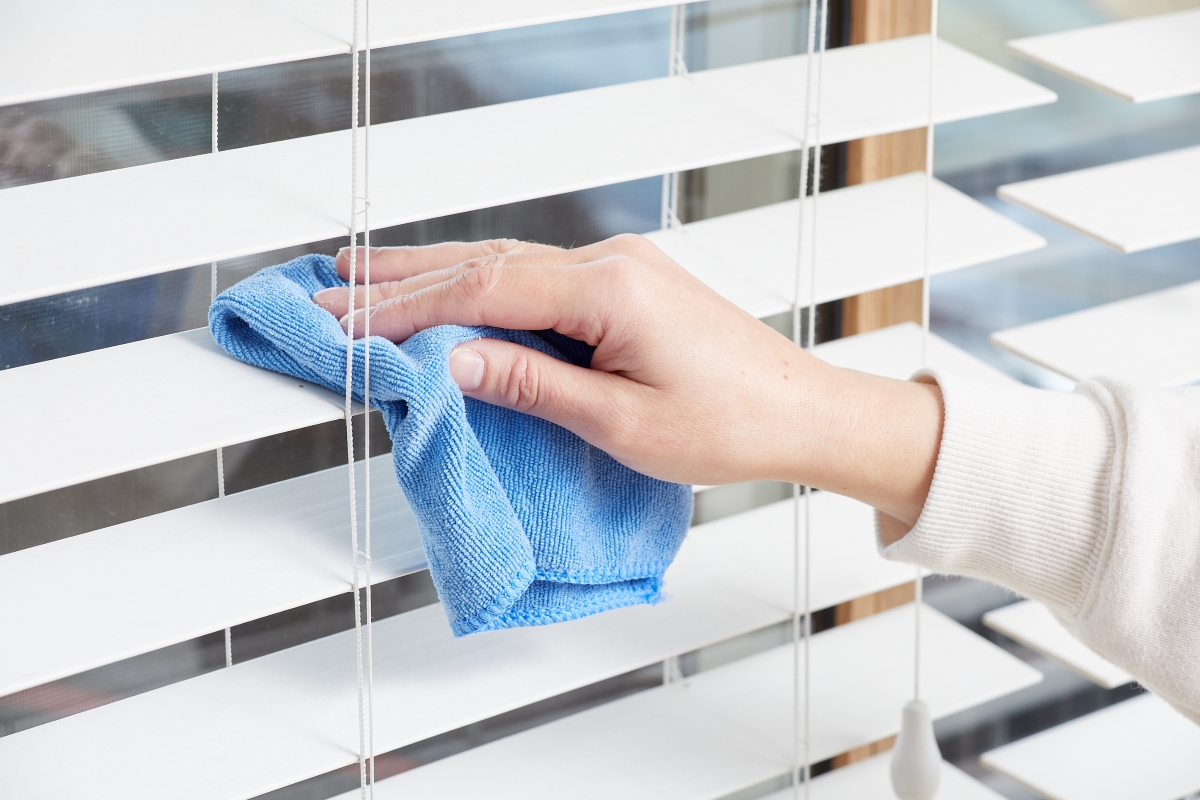
Don’t think that you’ve solved your dust dilemma just because you’ve exchanged fabric window treatments for blinds. Dust sticks to blinds like glue, which is why you should clean window blinds on a regular basis.
14. Install an Air Purifier
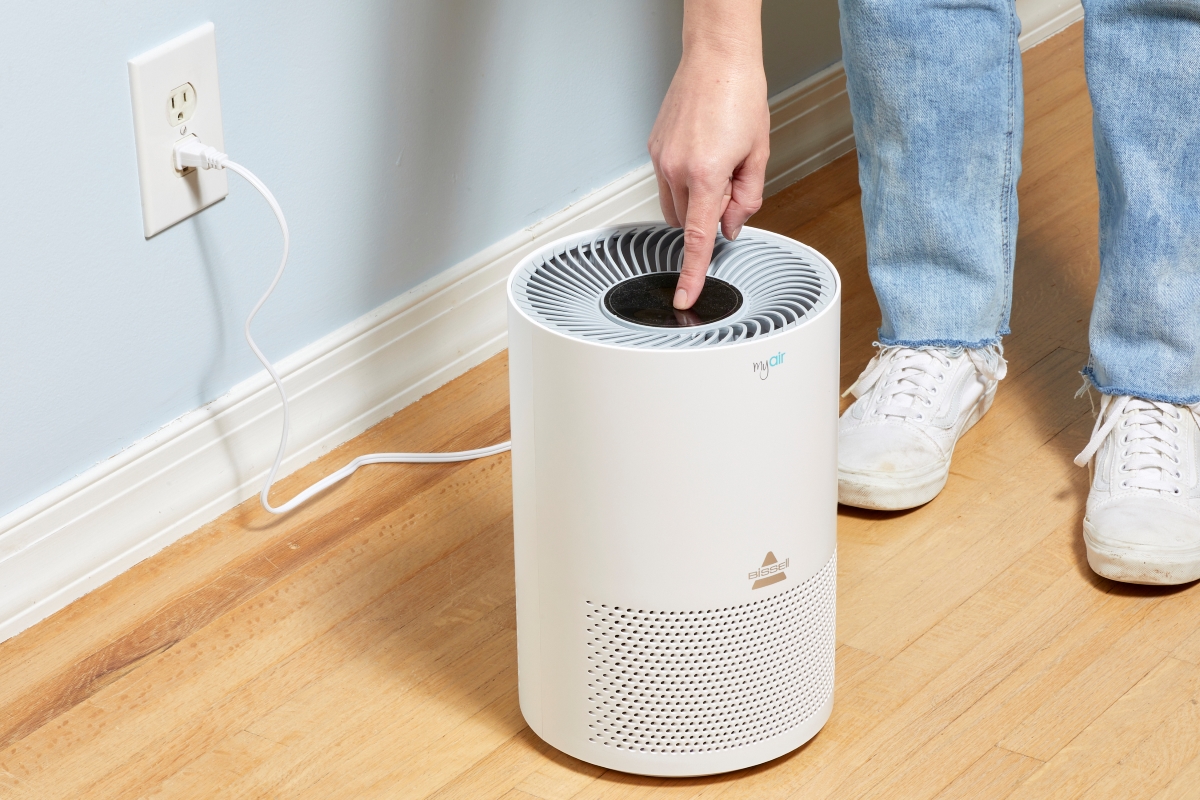
Do air purifiers help with dust? You bet. These appliances come in a variety of shapes and sizes, from whole-house units to small, portable single-room models. The most common types of air purifiers for dust have a fan that circulates the air and a filter that captures dust and other pollutants.
15. Keep Closets Tidy
There are lots of fabrics in a closet, and textiles shed fibers, contributing to dust in the home. Declutter closets and keep only what you need for the season in that space. Make sure there’s enough room between items and shelves to dust the closet regularly, along with the rest of your home.
16. Replace Furnace Filters

One of the most important ways to minimize dust buildup in the wintertime is to change the furnace filter monthly. Furnace filters are an inexpensive means of cleaning the air and preventing dust from blowing back throughout the home. There are many types of furnace filters on the market, from inexpensive pleated paper filters to reusable electrostatic ones (learn about our favorites in our researched guide to the best furnace filter replacements).
17. Store Clothes and Bedding in Bags
Stray cotton and polyester fibers from clothes, bedding, and pillows can be a major source of dust. The solution to both closet clutter and drifting dust particles is to put things in bags. There are a variety of space-saving, vacuum-seal bags available in home specialty stores, but even some good old-fashioned garment bags will help cut down on dust from clothes and fabrics.
18. Take Your Shoes Off
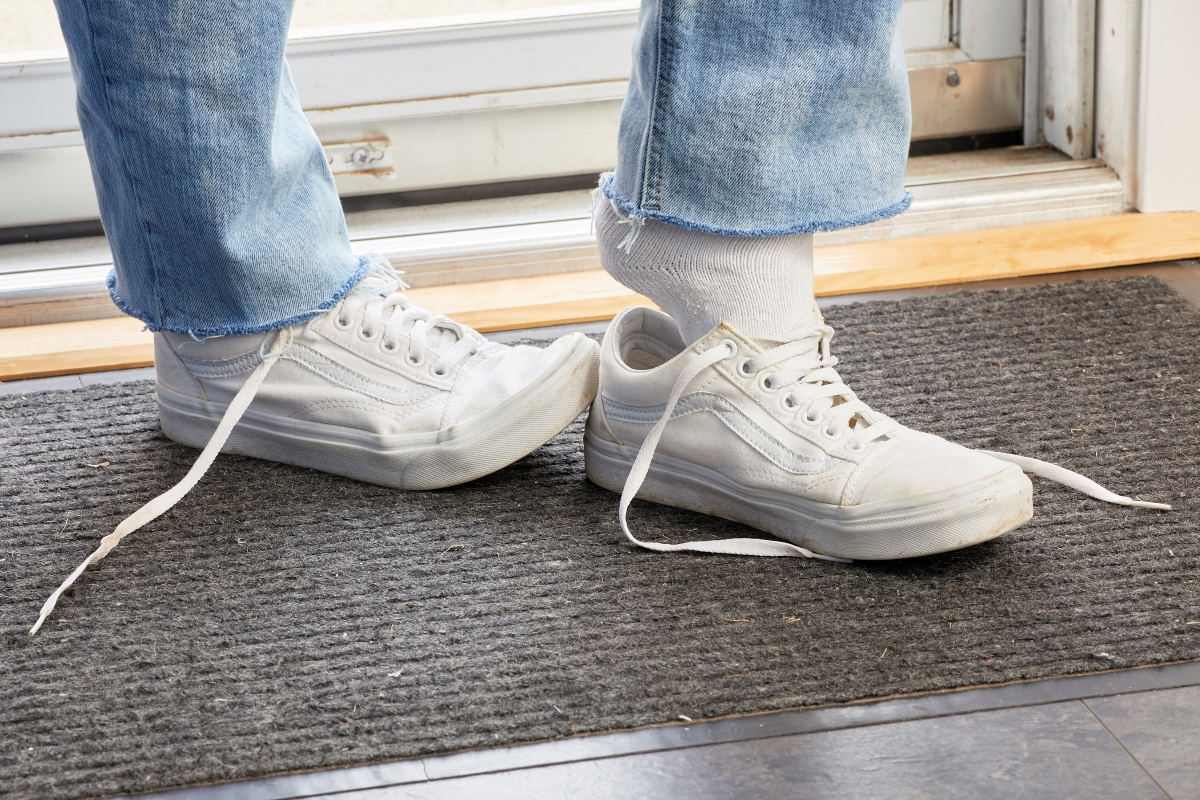
All sorts of debris hitches a ride on the soles of your shoes. You will avoid bringing dust and dirt from the outside into your home if you, and your guests, park shoes at the door when entering your house. It’s nice to offer slippers to anyone who might feel awkward going shoeless in your home, so have a few “guest” house shoes at the door for friends and family to use.
19. Limit Textiles
Textiles not only capture dust and hold onto it—they create it too. Limit your throw pillows, blankets, and other textiles on your bed and other furniture to the essentials. On windows, forego the drapes, and pick window treatments that are less likely to attract dust, like roller shades or Roman shades, both of which are easily dusted or wiped down.
20. Clean Your Plants
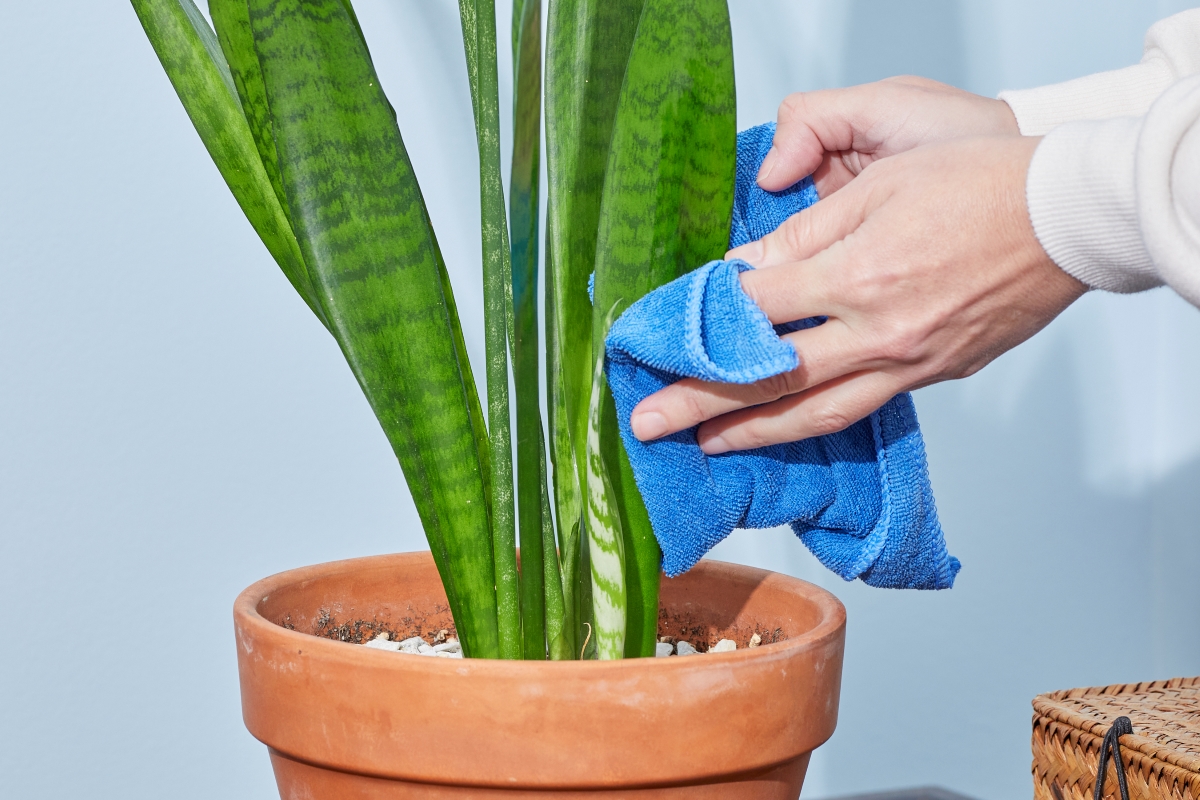
Houseplants are a major collector of dust. Not only is this bad for your health, but a coating of dust on a plant’s leaves makes it difficult for them to absorb sunlight. Use a microfiber cloth to brush off the dust, and then polish the leaves with mayo to get them to glisten.

